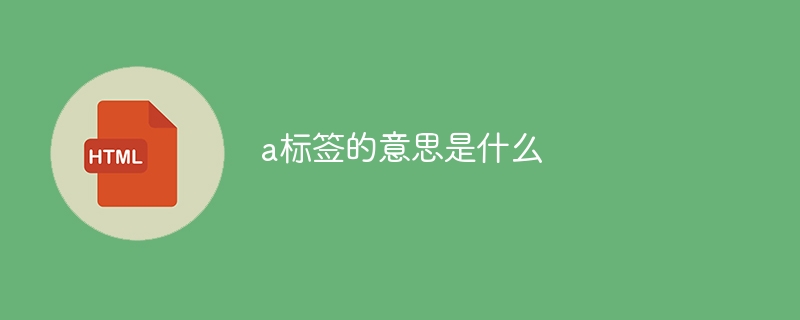
The
a tag means a hyperlink, through which you can jump from one page to another, or jump within the current page. The a tag is a block-level element surrounded by a pair of angle brackets. The syntax is, where the URL is the target address of the link. It should be noted that the href attribute of the a tag is required and specifies the target address of the link. At the same time, the a tag can also contain some other attributes, such as id, class, target, etc., to further define and style the link.

# Operating system for this tutorial: Windows 10 system, Dell G3 computer. The
a tag is a tag in the HTML language, used to create a hyperlink (hyperlink), through which you can jump from one page to another page, or jump within the current page.
The a tag is a block-level element. It is surrounded by a pair of angle brackets. The syntax is, where URL is the target address of the link. .
In addition to creating hyperlinks, the a tag can also be used for some other purposes, such as:
Download link: By setting the download attribute of the a tag, you can download the file when the link is clicked.
Mail link: By setting the mailto attribute of the a tag, you can open the mail client to send mail when you click the link.
Anchor link: By setting the href attribute of the a tag to a relative path or an absolute path, you can jump within the current page.
It should be noted that the href attribute of the a tag is required, and it specifies the target address of the link. At the same time, the a tag can also contain some other attributes, such as id, class, target, etc., to further define and style the link.
In addition to the basic href attribute, the a tag also supports many other attributes, which can provide more link information and behavior. The following are some commonly used a tag attributes:
href: Specifies the target address of the link. This is a required attribute.
hreflang: Specifies the language encoding of the link.
rel: Specifies the relationship type of the link. For example, nofollow means do not follow the link.
target: Specify the target window or tab of the link. For example, _blank means opening the link in a new window or tab.
download: The specified link is the download link. If the user clicks the link, the specified file will be downloaded.
media: Specify the media query conditions of the link. Used to link to responsively designed web pages.
name: Specify the name of the link, used for anchor links.
The href attribute can also accept JavaScript function calls to execute JavaScript code when a link is clicked.
In addition to the a tag, there are other tags used to create links in HTML, such as link, base, etc. These tags can be used in conjunction with the a tag to provide more link functionality and styling options.
It should be noted that when using a tags, you should follow some best practices, such as avoiding using empty links (a tags without href attributes), avoiding using automatic jumps, etc. At the same time, link accessibility and cross-browser compatibility also need to be considered to ensure that the link works well on a variety of devices and browsers.
The above is the detailed content of what does a tag mean. For more information, please follow other related articles on the PHP Chinese website!




